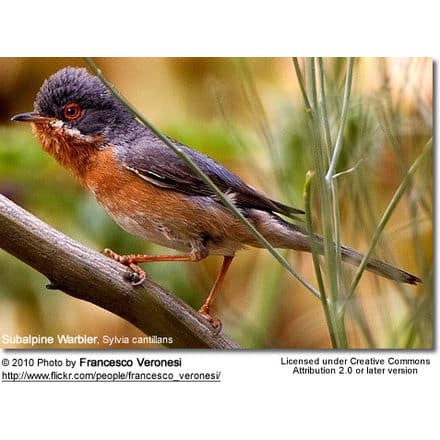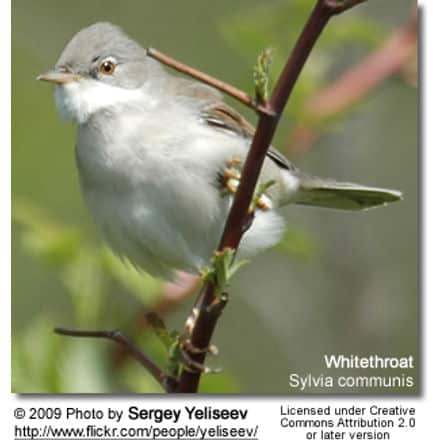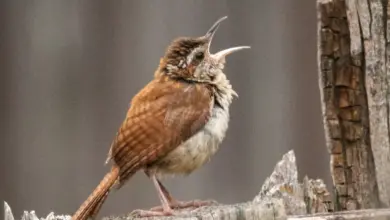Unsorted Wild Birds
African Warblers
This is a complete list of all African Warblers that also include links that go to each bird species in-depth page that has images and further information.
This information is further broken into groups by Genus for each Warbler.

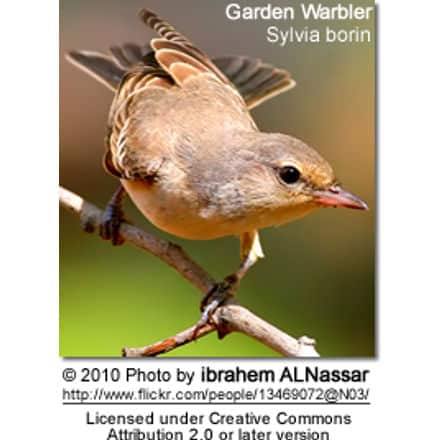
Genus Sylvietta
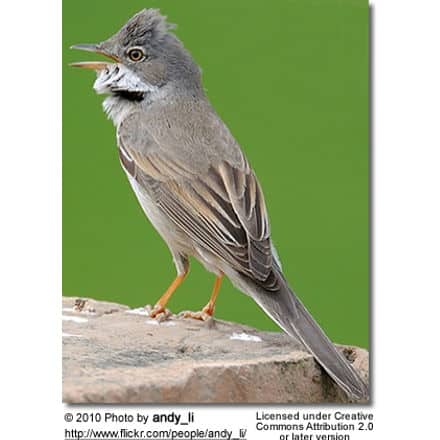
- Green Crombec Sylvietta virens : Found in Angola, Benin, Cameroon, Central African Republic, Republic of the Congo, Democratic Republic of the Congo, Ivory Coast, Equatorial Guinea, Gabon, Gambia, Ghana, Guinea, Kenya, Liberia, Mali, Nigeria, Senegal, Sierra Leone, Sudan, Tanzania, Togo, and Uganda. It lives in subtropical or tropical moist lowland forests and moist shrubland.
- Lemon-bellied Crombec Sylvietta denti : Found in Angola, Cameroon, Central African Republic, Republic of the Congo, Democratic Republic of the Congo, Ivory Coast, Equatorial Guinea, Gabon, Gambia, Ghana, Guinea, Liberia, Nigeria, Sierra Leone, and Uganda. It lives in subtropical or tropical moist lowland forests and moist shrubland.
- White-browed CrombecSylvietta leucophrys : The White-browed Crombec is a species of African warbler, formerly placed in the family Sylviidae. The enigmatic Chapin’s Crombec might be a distinct species, or a subspecies Sylvietta leucophrys chapini of the present species. The White-browed Crombec is found in Burundi, Democratic Republic of the Congo, Kenya, Rwanda, Tanzania, and Uganda.
- Chapin’s Crombec Sylvietta (leucophrys) chapini – possibly extinct (late 20th century?)
Northern Crombec Sylvietta brachyura : Found in Benin, Burkina Faso, Cameroon, Central African Republic, Chad, Democratic Republic of the Congo, Ivory Coast, Djibouti, Eritrea, Ethiopia, Gambia, Ghana, Guinea, Guinea-Bissau, Kenya, Mali, Mauritania, Niger, Nigeria, Senegal, Sierra Leone, Somalia, Sudan, Tanzania, Togo, and Uganda. Its natural habitat is dry savanna.- Short-billed Crombec Sylvietta philippae : Found in Ethiopia and Somalia. Its natural habitat is dry savanna.
- Red-capped Crombec Sylvietta ruficapilla : Found in Angola, Republic of the Congo, Democratic Republic of the Congo, Malawi, Mozambique, Tanzania, Zambia, Zimbabwe, and possibly Botswana. It lives in subtropical or tropical dry forests, subtropical or tropical dry shrubland, and subtropical or tropical moist shrubland.
- Red-faced Crombec Sylvietta whytii : Found in Burundi, Ethiopia, Kenya, Malawi, Mozambique, Namibia, Rwanda, Sudan, Tanzania, Uganda, and Zimbabwe. It lives in subtropical or tropical dry forests, subtropical or tropical moist montanes, and subtropical or tropical dry shrubland.
- Somali Crombec Sylvietta isabellina : Found in Ethiopia, Kenya, Somalia, and Tanzania. This bird species inhabits subtropical or tropical dry shrubland.
- Cape Crombec or Long-billed Crombec Sylvietta rufescens
Genus Melocichla
- Moustached Grass-warbler Melocichla mentalis : Found in Angola, Benin, Burkina Faso, Burundi, Cameroon, Central African Republic, Chad, Republic of the Congo, Democratic Republic of the Congo, Ivory Coast, Ethiopia, Gabon, Ghana, Guinea, Guinea-Bissau, Kenya, Liberia, Malawi, Mali, Mauritania, Mozambique, Nigeria, Rwanda, Senegal, Sierra Leone, Sudan, Tanzania, Togo, Uganda, Zambia, and Zimbabwe. It lives in moist savanna and subtropical or tropical moist shrubland.
Genus Achaetops
- Damara Rock-jumper Achaetops pycnopygius : Found in Angola and Namibia.
Genus Sphenoeacus
- Cape Grassbird or Cape Grass WarblerSphenoeacus afer : Found in southern Africa in South Africa, Lesotho, Mozambique, and Swaziland with an isolated population in eastern Zimbabwe. This is a common species of coastal and mountain fynbos and long, rank grass on mountain slopes or in river valleys. The Cape Grassbird is 17-19 cm long and weighs around 30 g. Its crown and face sides are rufous, except for white around the eye, and it has black malar (cheek) and moustachial stripes on its white throat. The upperparts are brown with heavy streaking and the long tail is a lighter brown. The underparts are whitish with blackish spotting. Males and females look alike, but the juvenile has a streaked cap and is duller than the adult. The song is jangling and musical, and the call is a nasal pheeeo. The long, pointed, straggly tail, chestnut cap, and facial stripes are diagnostic of Cape Grassbird. It is much larger than any cisticola, and the heavily streaked back and the pointed tail eliminate confusion with the Moustached Grass Warbler. The Cape Grassbird builds a cup nest flow in vegetation. This species is monogamous, pairing for life. Its eggs have one of the slowest rates of embryonic development amongst Southern African species. The Cape Grassbird is usually seen alone or in pairs, moving through vegetation foraging for insects and other small invertebrates.
Genus N.N. – formerly Bradypterus (now Megaluridae)
- Victorin’s Scrub-warbler “Bradypterus” victorini : Found only in South Africa; its natural habitat is subtropical or tropical moist shrubland.
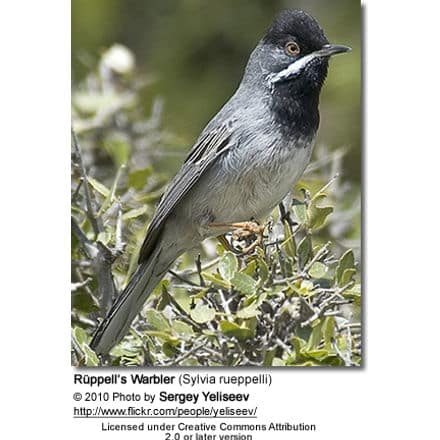
Genus Macrosphenus – long bills
- Kemp’s Longbill Macrosphenus kempi : Found in Cameroon, Ivory Coast, Ghana, Guinea, Liberia, Nigeria, and Sierra Leone. This bird species inhabits subtropical or tropical moist lowland forests.
- Yellow Longbill Macrosphenus flavicans : Found in Angola, Cameroon, Central African Republic, Republic of the Congo, Democratic Republic of the Congo, Equatorial Guinea, Gabon, Nigeria, Sudan, Tanzania, and Uganda. They inhabit subtropical or tropical moist lowland forests and moist montanes.
- Grey Longbill Macrosphenus concolor : Found in Angola, Benin, Cameroon, Central African Republic, Republic of the Congo, Democratic Republic of the Congo, Ivory Coast, Equatorial Guinea, Gabon, Ghana, Guinea, Liberia, Nigeria, Sierra Leone, Tanzania, Togo, and Uganda. This bird species inhabits subtropical or tropical moist lowland forests.
- Pulitzer’s Longbill Macrosphenus pulitzeri : Formerly considered an “Old World warbler” and placed in the family Sylviidae, it is now considered to belong to an as-yet-unnamed group of enigmatic African warblers. It is found only in Angola. It inhabits subtropical or tropical dry forests. The continued existence of this species is threatened by habitat destruction.
- Kretschmer’s Longbill Macrosphenus kretschmeri : Found in Kenya, Mozambique, and Tanzania. They inhabit subtropical or tropical moist lowland forests and moist montanes.
